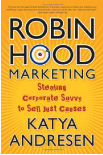Have you heard the tale of Scheherezade? She was a noble lady who married the king of Arabia. Her new husband had a grim habit: marrying and killing off a wife every night.
Scheherezade’s beauty couldn’t save her, but her stories did. Night after night, she told him one fascinating story after another, always ending with a teaser or a cliffhanger. The king kept her alive another day…to hear the end of the story.
After 1001 nights, he had fallen in love with her and remained faithful the rest of his days.
We all love stories–but many nonprofit organizations can’t tell their stories to save their lives. Is yours one of them? Here’s how to become the Scheherezade of nonprofits.
Six stories your nonprofit should tell
Andy Goodman tells us there are six stories every organization should be ready to tell.
- The nature of our challenge story: This story describes the problem that you are trying to address with your programs/services. “Too often, we express this as a number,” warns Goodman.
- The creation story: This is the “how we started” story. “It’s primarily for internal use,” Goodman says, “but I think everybody who works in an organization should know it.”
- The emblematic success story: This story shares your unique approach and why it works.
- The values story: These are the stories through which your organization shows how it lives out its core values
- The striving to improve story: This story is for internal use and says “sometimes we fall short, sometimes we outright fail, but we always learn from our mistakes and do better next time,” Goodman says.
- The where we are going story: This is a story that says if your organization does its job right, this is what it will look like in five to 10 years. (For example, the ADL’s “A World Without Hate.”)
Some of these stories are for your prospects and supporters. Some are for your Board, staff, and volunteers. All of them say more about your organization than any mission statement or set of numbers can do alone.
Put it in writing
Sometimes you’ll tell your story in person, or on video, or through graphics. Often, you’ll tell it in writing. When you do, heed these 10 Tips for Writing Your Nonprofit Story from Network for Good. I particularly like #7!
